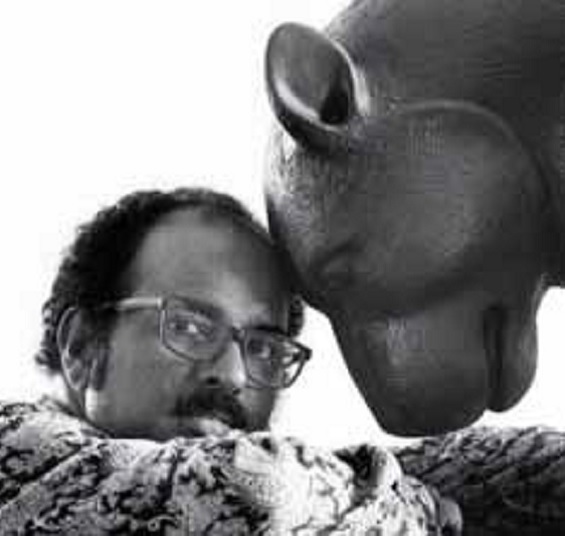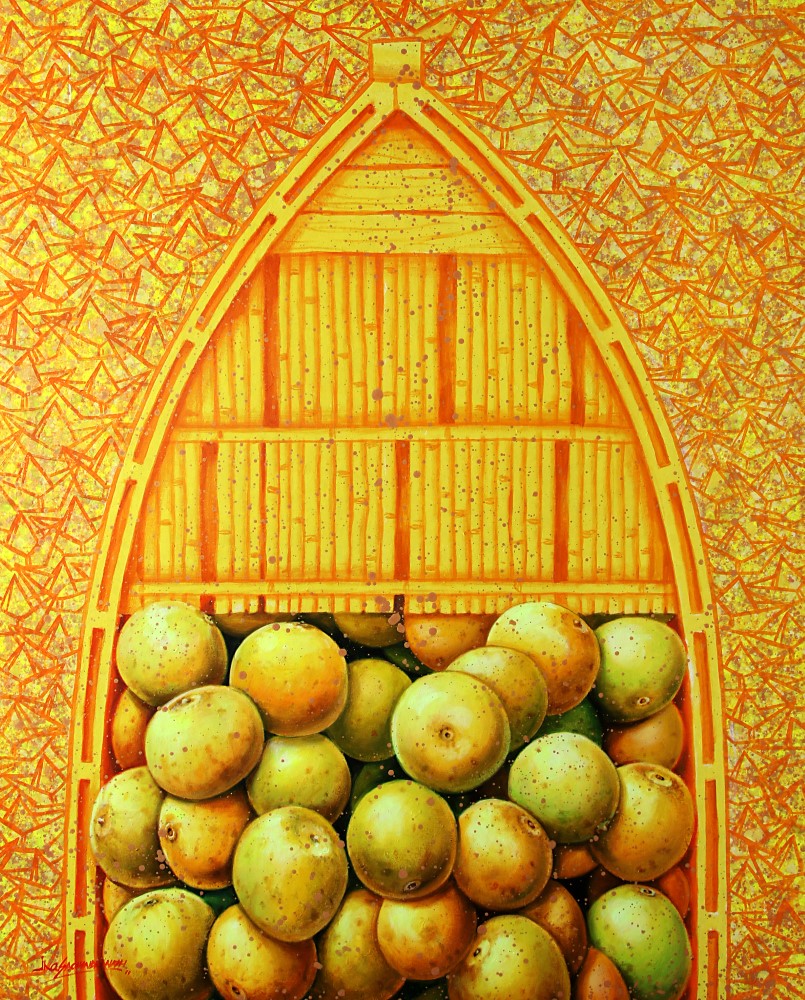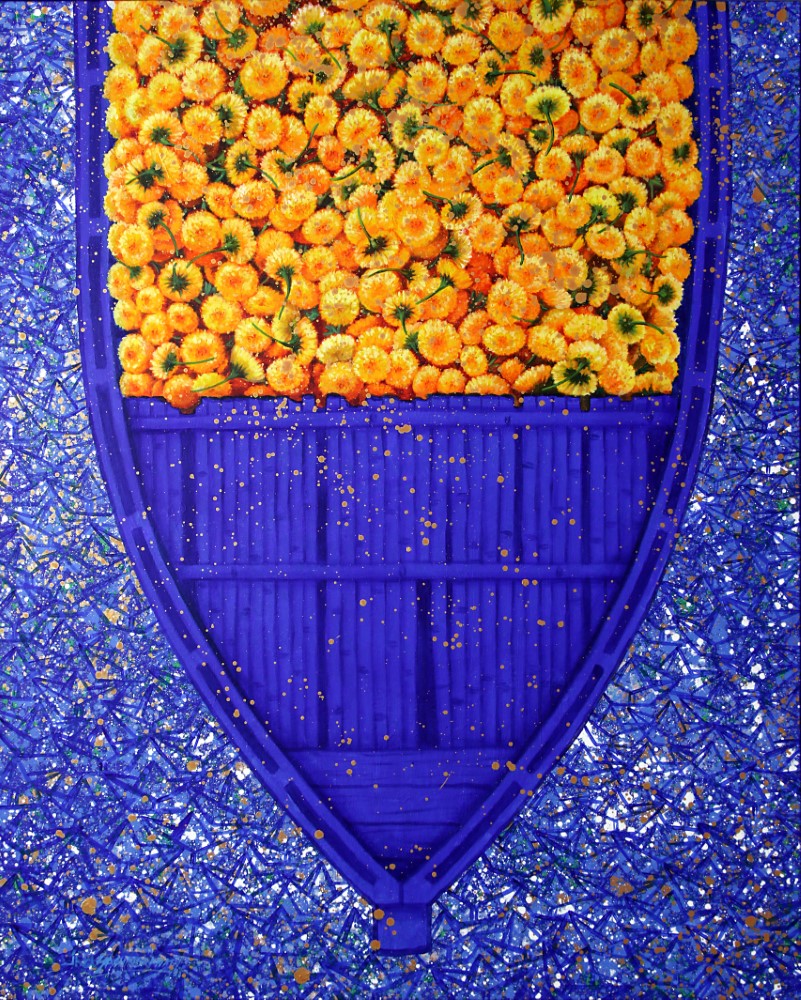B the vicious circle of death and rebirth.right yellow, deep colours of the earth are a hallmark of Sachindranath Jha’s art. When I look at Sachindranath’s sculptures and photographs I am pulled back into the traditional culture, particularly of North India where the Ganga literally lives in every home. In traditional Indian homes, Gangajal or ‘holy water’ is integral, be it in a small glass bottle or a plastic jerry can. No self-respecting Hindu would ever be found without a few drops of Gangajal in their homes. Post-independent India saw large extended families where rituals and puja were part of the everyday as was the sweet white milky concoction of milk, ghee, dahi, shahad honey and the most important, a few drops of Gangajal to make an otherwise sweet mixture into the divine prasad called Charnamrit. Belonging to a traditional Brahminical family from the Madhubani district in Bihar Sachindranath Jha is deeply connected to the land of his ancestors where the sacred river Ganga is part of his consciousness. Naturally, he named his solo exhibition Charnamrit. I too saw a deep connection in the word. From the sacred portion to the five elements of his exhibition where there is sculpture, painting, photographs, installations and performance. The five strands of his work for me became the five ingredients of Charnamrit, with the Ganga as the powerful catalyst.From Gomukh to Gangasagar, Sachindranath Jha has captured the different hues, tones and the drama of the Ganga. He has travelled to all the five important ‘teerthasthanas’ of theGanga – Nashik, Ujjain, Prayagraj, Varanasi and Haridwar – and thus created his oeuvre. His pictorial language is undoubtedly local vernacular, the materials he uses are traditional. However, he has brought his living experience into the art he creates. The legends and stories of Ganga have inspired the art practice of Bihar-based interdisciplinary artist Sachindranath Jha.





